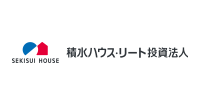Company Analysis Sekisui House Reit, Inc.
1. Summary
Disadvantages
- Price (78600 ¥) is higher than fair price (45664.39 ¥)
- Dividends (5.34%) are below the sector average (5.52%).
- The stock's return over the last year (-6.65%) is lower than the sector average (3.19%).
- Current debt level 45.26% has increased over 5 years from 44.57%.
- The company's current efficiency (ROE=5.71%) is lower than the sector average (ROE=8.3%)
Similar companies
2. Share price and performance
2.1. Share price
2.3. Market efficiency
| Sekisui House Reit, Inc. | Real Estate | Index | |
|---|---|---|---|
| 7 days | 2.3% | 0% | -1.3% |
| 90 days | -0.3% | 0% | 12.8% |
| 1 year | -6.7% | 3.2% | 4% |
3309 vs Sector: Sekisui House Reit, Inc. has significantly underperformed the "Real Estate" sector by -9.84% over the past year.
3309 vs Market: Sekisui House Reit, Inc. has significantly underperformed the market by -10.62% over the past year.
Stable price: 3309 is not significantly more volatile than the rest of the market on "Tokyo Stock Exchange" over the last 3 months, with typical variations of +/- 5% per week.
Long period: 3309 with weekly volatility of -0.1279% over the past year.
3. Summary of the report
4. Fundamental Analysis
4.1. Stock price and price forecast
Above fair price: The current price (78600 ¥) is higher than the fair price (45664.39 ¥).
Price is higher than fair: The current price (78600 ¥) is 41.9% higher than the fair price.
4.2. P/E
P/E vs Sector: The company's P/E (19.38) is lower than that of the sector as a whole (164.79).
P/E vs Market: The company's P/E (19.38) is lower than that of the market as a whole (150.15).
4.2.1 P/E Similar companies
4.3. P/BV
P/BV vs Sector: The company's P/BV (1.1) is lower than that of the sector as a whole (144.84).
P/BV vs Market: The company's P/BV (1.1) is lower than that of the market as a whole (120.08).
4.3.1 P/BV Similar companies
4.4. P/S
P/S vs Sector: The company's P/S indicator (7.42) is lower than that of the sector as a whole (148.36).
P/S vs Market: The company's P/S indicator (7.42) is lower than that of the market as a whole (120.98).
4.4.1 P/S Similar companies
4.5. EV/Ebitda
EV/Ebitda vs Sector: The company's EV/Ebitda (24.14) is lower than that of the sector as a whole (158.79).
EV/Ebitda vs Market: The company's EV/Ebitda (24.14) is lower than that of the market as a whole (120.75).
5. Profitability
5.1. Profitability and revenue
5.2. Earnings per share - EPS
5.3. Past profitability Net Income
Yield Trend: Rising and has grown by 4% over the last 5 years.
Earnings Slowdown: The last year's return (0%) is below the 5-year average return (4%).
Profitability vs Sector: The return for the last year (0%) exceeds the return for the sector (-4.68%).
5.4. ROE
ROE vs Sector: The company's ROE (5.71%) is lower than that of the sector as a whole (8.3%).
ROE vs Market: The company's ROE (5.71%) is lower than that of the market as a whole (9.39%).
5.5. ROA
ROA vs Sector: The company's ROA (2.95%) is lower than that of the sector as a whole (3.69%).
ROA vs Market: The company's ROA (2.95%) is lower than that of the market as a whole (4.46%).
5.6. ROIC
ROIC vs Sector: The company's ROIC (0%) is lower than that of the sector as a whole (7.47%).
ROIC vs Market: The company's ROIC (0%) is lower than that of the market as a whole (8.83%).
7. Dividends
7.1. Dividend yield vs Market
Low yield: The dividend yield of the company 5.34% is below the average for the sector '5.52%.
7.2. Stability and increase in payments
Dividend stability: The company's dividend yield 5.34% has been steadily paid over the past 7 years, DSI=0.86.
Weak dividend growth: The company's dividend yield 5.34% has been growing weakly or stagnant over the past 5 years. Growth over only 1 year.
7.3. Payout percentage
Dividend Coverage: Current payments from income (106.28%) are at an uncomfortable level.
Pay for your subscription
More functionality and data for company and portfolio analysis is available by subscription

 MAX Chat
MAX Chat


